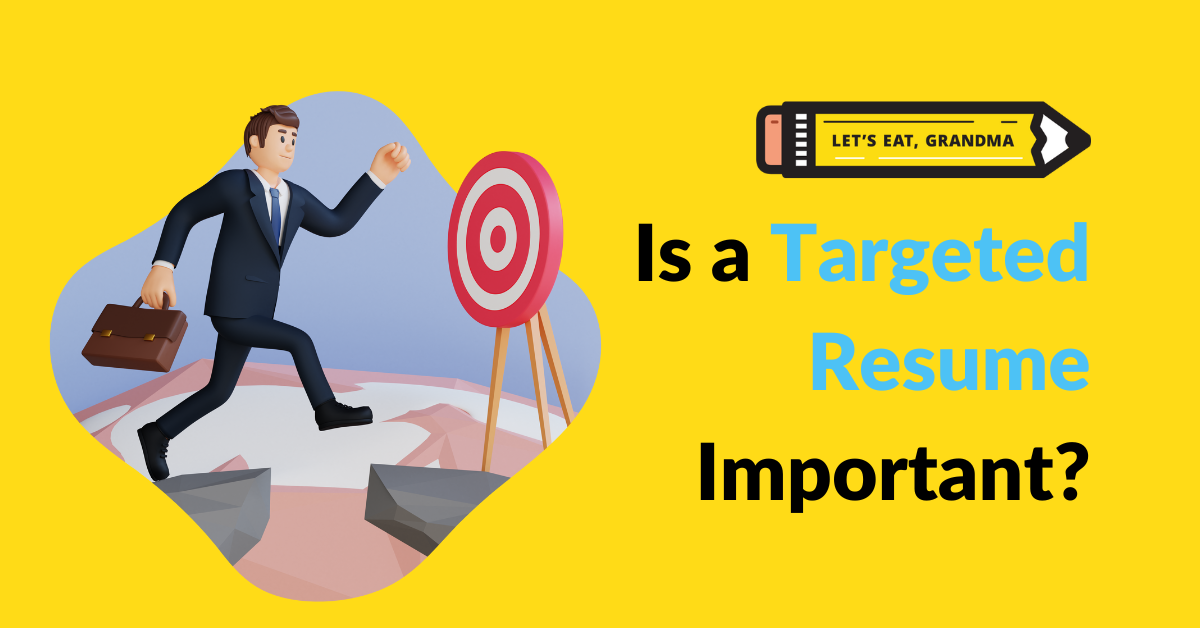You’ve finally got your resume in great shape (thanks to a professional resume service or your own hard work), and now you can sit back and relax, right? After all, all you need to do is hit “apply” a few times and the job offers will start rolling in.
Not so fast! While having a solid resume is definitely a great start, it’s not enough – you need to customize it for each job application. Why is this necessary? Well, one word: ATS.
Applicant Tracking Systems are used by 97.4% of Fortune 500 companies, so chances are, the company you’re applying to is using one too. These systems scan and sort resumes based on specific criteria, and if your resume doesn’t match up with the job description, it could get lost in cyberspace (and never seen by a human!).
And even if you’re applying for a smaller company that may not use ATS, it’s still important to tailor your resume. Why? Because even without a strict system in place, employers are still skimming through many resumes and looking for the most relevant skills and qualifications. By tailoring your resume, you can ensure that you’re highlighting the most important information and capturing their attention.
However, we’re not saying you need to rewrite your entire resume for each job – you only need to strategically tweak it instead of sending out a generic version. From understanding the job description and strategically using keywords to optimizing your skills section and education, here’s exactly how to write a targeted resume.
1. Understand the job description
Before you even start writing your resume, take some time to fully understand the job description. Identify the key responsibilities and analyze what the company is looking for in a candidate. While you do that, take note of any specific skills or qualifications they mention, and pay particular attention to any jargon or industry-specific keywords used.
2. Use keywords strategically across your resume
The entire goal of targeted resumes is to capture and hold the attention of the employer in question. But to even get to that point, you’ll need to “pass” the ATS. Recruiters don’t look at every single application they receive – instead, they use an ATS to search for candidates with specific skills, job titles, degrees, certifications, or keywords listed on their resume.
With that being said, it’s essential to make sure that your resume contains exact keywords from the job description. That way, when the ATS scans your resume, it’ll recognize that you’re a strong match for the job. But be careful not to overdo it – avoid keyword stuffing and keep it natural and relevant.
For example, if the job description mentions that they’re looking for a candidate with experience in “social media management,” make sure to include that exact phrase in your resume. Additionally, it’s helpful to mention any similar keywords, such as “social media marketing” or “digital marketing,” to increase your chances of being flagged by the ATS.
Pro Tip: Spelling is important too! Make sure to note down the same spelling for keywords that the job description uses, as some ATS systems are sensitive to variations. For instance, if the job description mentions “project management” make sure to use the same spelling and not just variations like “project managing.”
3. Start with a strong Summary
The top of your resume is valuable real estate, so make sure to use it wisely. Instead of the outdated “objective statement,” a strong summary section can quickly and effectively set you apart from other candidates. It can also capture the attention of recruiters who may only spend a few seconds skimming through your resume. So make it count!
Use this section to highlight your most relevant skills, experiences, and achievements that directly align with the job requirements. This is a perfect opportunity to use the keywords you picked out from the job description, too.
Here are some quick tips for writing a summary that aligns with the job description:
- Concisely highlight your top two or three relevant hard skills to the job description and demonstrate the capacity in which you use them
- Show your passion or why you’re interested in a position if transitioning into a new industry or field
- Keep it short – aim for 75-100 words (unless you’re an executive-level candidate, then aim for 100-175 words)
- Use either paragraph form or bullet points, whichever highlights your strengths better
- Avoid buzzwords and cliches – be specific and highlight unique achievements or experiences
4. Highlight relevant experience and achievements
When it comes to your work experience section, the key is to prioritize your experiences based on their relevance to the job you’re applying for. Instead of listing every single job you’ve ever had, you may want to just focus on the ones that directly relate to the job requirements.
Then, within each experience, showcase your achievements in strong bullet points, with results and quantifiable metrics. For example, instead of just listing a responsibility, like “Managed a team,” try something like “Managed a team of 10 employees, providing individualized coaching that resulted in a 25% increase in productivity.” Results and metrics help to better demonstrate your impact and value as an employee.
Make sure your bullet points address all of the key skills and qualifications from the job description. You may even want to reorder your bullet points, or slightly tweak the language, to make sure they’re presenting the most relevant information that an employer would want to see.
And not to worry career changers – even if you only have experience in a different field or industry, there may still be transferable skills or experiences that can be highlighted to showcase your abilities for the job at hand. Don’t discount seemingly unrelated experiences – instead, think about how they can demonstrate your transferable skills.
For instance, if you’re applying for a marketing role but only have experience in customer service, highlight your communication and problem-solving skills as transferable to the new position – because they are!

Photo by LinkedIn Sales Solutions on Unsplash
5. Optimize the Skills section
Remember when you took note of the hard and soft skills listed in the job description? Make sure your “Skills” section includes all of the relevant skills that you possess, making sure to use similar language and keywords as the job posting. This includes all software, methodologies, and systems that are listed in the job description.
6. Customize your Education section
You may think that the education section of your resume is just a list of your degrees and certifications, so there’s not much room for customization. However, this section can still be tailored to the job you’re applying for.
If you have relevant coursework or certifications that align with the job requirements, make sure to mention them here. Similarly, if you attended any workshops or training sessions that are relevant to the role, include them as well.
Additionally, if you have any academic achievements that demonstrate skills required for the job, don’t be afraid to highlight them. This could include academic awards, research projects, or any other accomplishments that showcase your abilities and potential for success in the position.
So, let’s say you’re applying for a marketing job and have a degree in psychology. You can still customize your education section by highlighting any courses you took related to consumer behavior or market research. This shows the hiring manager that you have a solid foundation in the field, even if it wasn’t your primary area of study.
7. Test your resume against the job description
Congratulations, you’ve now customized your resume to better match the job description! But before you hit submit, it’s always a good idea to run your resume through an online tool like Jobscan. This will compare your resume against the job description and provide feedback on any missing keywords or skills that could be added.
Make any necessary tweaks based on this feedback and then you’ll be ready to confidently submit your application. Remember, the more tailored your resume is to the job, the better chance you have of standing out and getting that interview.
Pro Tip: You can also try out our free resume critique service and receive personalized feedback from a human expert! That way, you have the OK from both a tool and a professional writer, further boosting your chances of hearing back from potential employers.
Conclusion
Writing a targeted resume may take a bit of extra time and effort, but it can greatly increase your chances of landing an interview. In other words, it’s worth it! So next time you’re applying for a job, don’t just send out the same generic resume – take the time to tailor it to the specific role.
However, don’t forget that your resume is just one element of your job application. A well-written cover letter is just as important and should also be tailored to the job you’re applying for. Together, these two pieces can put you in a strong position to impress potential employers and secure that coveted job interview.
So don’t underestimate the power of customization at large – it can make a world of difference in your job search.
Ready for more job search help?
Sign up for a free Senior Writer Resume Critique to see what’s holding you back from landing interviews. One of our top professional resume writers will give you personalized feedback on the top 3 items you can improve based on our expert practices!






